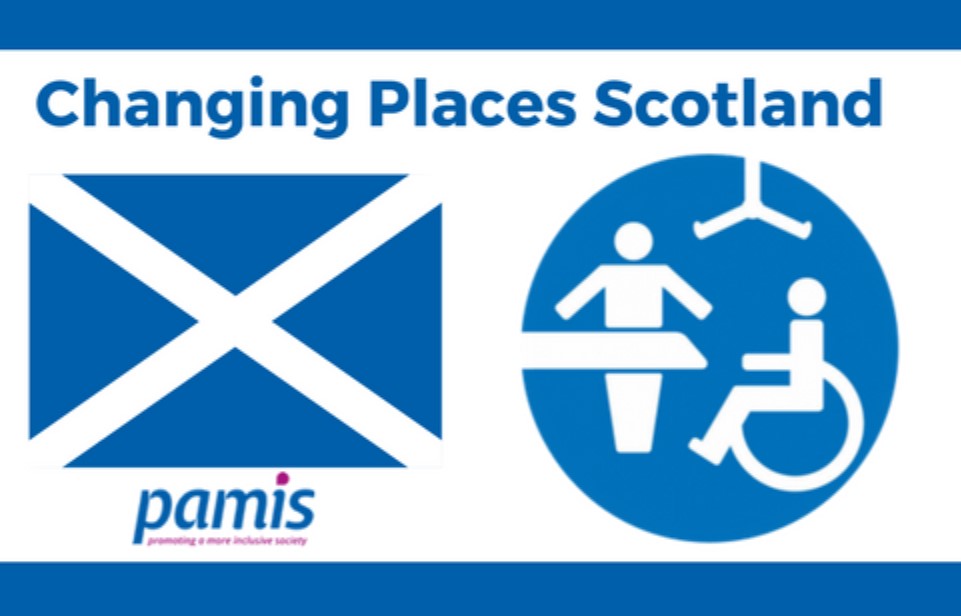Overview
The Changing Places Toilets (CPT) initiative introduced by the Scottish Government recognises that many disabled people, particularly those with multiple and complex needs, cannot use public toilets or standard accessible toilets because these facilities do not meet their needs. Scottish Building Regulations now stipulate by law that Changing Places Toilets are built in all new large public buildings.
The Changing Places Toilets within RACH can be found on the first floor.
What Exactly Are Changing Places Toilets?
CPTs are larger, accessible toilets designed so that children and adults, who may need carer support, appropriate equipment and more space, can use toilet facilities in public venues or spaces. CPTs have some key design features which differ from a standard accessible toilet. Compared to a standard accessible toilet, a CPT:
- is larger (12m2) to allow sufficient turning room for larger-power wheelchairs, accompanying carers, or family members, as well as the specialist equipment required;
- has a height-adjustable adult-sized changing bench to enable people who are unable to sit on the toilet to lie down while being changed or having their personal care needs attended to;
- has a ceiling hoist to lift people out of their wheelchairs onto a changing bench or toilet safely and securely, depending on their needs; and,
- has a centrally placed peninsular toilet which allows for access either side for people who require support from both sides.
Who uses CPTs?
CPTs offer a vital facility to thousands of disabled people and their families and carers whose needs cannot be met in current public toilet provision. This includes, but is not limited to:
- people with profound or multiple learning disabilities;
- people with muscular dystrophy;
- older people;
- Veterans;
- people with limited mobility or who require the use of a larger wheelchair; and
- people who require a calm and quiet environment and may have sensory sensitivities.
CPTs are essential to ensuring equitable access to places and buildings.



